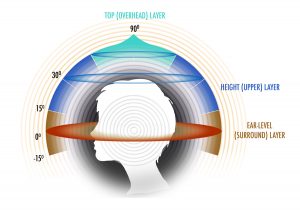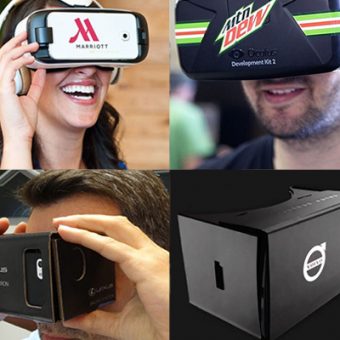Five Useful tips for sound in immersive media.
Virtual reality has grown faster in later years, but with this growth appears new challenges for content creators; for instance, visuals, narratives, and format for videos 360, but these are topics to treat in a different post, one of these challenges is to create a proper sound version of that content. 3D sound and the search of new sound experiences are not new, in fact, the binaural audio recording has its beginnings in France in 1881 with the Théâtrophone was the first attempt to make the person feel in a different space by means of sound.
Technology has advanced at an incredible pace in the last 20 years, now with the rise of VR applications and Video 360 binaural audio has it’s reborn. I strongly believe that is time to take advantage of it and create some quality content according to the capabilities of nowadays tech; that’s the reason why today I’m going to write 5 points to be considered when designing sound for interactive media.
Only works on headphones
In order to design a complete VR experience, content creators must create narratives as immersive as possible, this immersion must create interaction with different senses in order to convince the viewer; is worth highlighting the audience should wear HMD (head-mounted display) either if it is based on computers or game consoles (Oculus, Sony, HTC) or mobile based (Samsung, Google) and a pair of headphones, without headphones VR experiences are practically impossible to achieve. Besides, audio plays a huge part in VR in order to convince the audience and persuade the viewers. Said so, I just want to remember that the final “print” is encoded in one stereo mix with spatial properties.
three axis canvas
 audio allows you to control not only left and right like stereo mixing or even front and rear of the surround configurations (5.1 or 7.1); now the area is wider than ever, with 3D audio we can control the elevation of the sound, as in real life; to create this, our brain must be tricked to get the “elevation” effect creating the illusion and letting us control the position of the sound emitters in our mixes in an XYZ field.
audio allows you to control not only left and right like stereo mixing or even front and rear of the surround configurations (5.1 or 7.1); now the area is wider than ever, with 3D audio we can control the elevation of the sound, as in real life; to create this, our brain must be tricked to get the “elevation” effect creating the illusion and letting us control the position of the sound emitters in our mixes in an XYZ field.
Must be “realistic”
To create “realism”, sound have to have specific characteristic towards an immersive experience; for instance, as a sound designers we must bear in mind the use of the proper measures of the rooms projected, that helps the listeners to locate themselves in a specific area based on their own past experiences; another point to be considered is the distance and the attenuation of the sound emitters in relation to the viewer, these two practices would give you a better control and a better mix in your final project.
Keep the control
Viewers have the ability to control what they see, also they tend to miss some important details of the projected images; with that in mind, we must catch their attention with sound, guiding their focus and make them look to the right place to avoid confusions or lose relevant information.
 Leave it single
Leave it single
To create a good spatialisation we should avoid stereo sounds, mono sounds are better to implement with head tracking technology; furthermore, mono sounds could be located easily in the accurate place of the sounds emitters without interfering with other nearby sounds.
I sincerely hope that these bits of advice will help you to think and create audio for immersive media (games or 360 videos); To conclude this post, I’m going to let you this video with spatial audio with some of the characteristic mentioned above.







